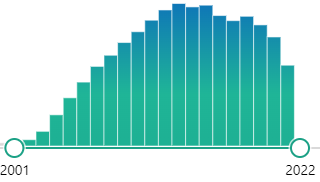 |
| Source |
A recent study conducted in The General Hospital of Western Theater Command, Sichuan Province assessed the effects of acupuncture of chronic lower back pain (Luo et al. 2019). In this trial, participants were randomly assigned to one of three treatment groups: hand-ear acupuncture, standard acupuncture, and usual care, which involved restorative exercise, strength training, medications, etc. (Luo et al. 2019). Ear acupuncture, or auricular acupuncture, is thought to be similar to reflexology where the ear has regional organization centers that represent different parts of the body created by pluripotent cells. When a certain region is stimulated, it can relieve pathological symptoms from other parts of the body for a period of time (Gori & Firenzuolli, 2007). The hand-ear acupuncture group were acupunctured at yaotongdian (lower back pain points) EX-UE 7 on the hand every other day for 4 weeks followed by acupuncture at yaotongdian AH 9 on the ear twice a week for the remaining 3 weeks. The standard acupuncture group received routine needle treatment curated by experts to specifically treat chronic lower back pain every other day for 4 weeks and twice a week for the remaining 3. Finally, the usual care group received usual care for the 7 weeks (Luo et al. 2019). The outcomes of this study were assessed via a series of blind interviews and measured at baseline, at 2 months after treatment, and at 6 months after. A modified Roland-Morris Disability Questionnaire (RMDQ) was used to evaluate back dysfunction and the visual analogue scale (VAS) was used to assess the severity of pain (Luo et al. 2019) This study found that both acupuncture treatments were more effective than usual care; however, the hand-ear group improved notably better in back function and lower back pain than the standard acupuncture treatment. The hand-ear group also showed better improvement over time indicating better long-term efficacy (Luo et al. 2019). This shows that acupuncture itself may have therapeutic effects and it is not dependent on placebo, as if that were the case, both acupuncture groups would have similar results.
 |
| Source |
Acupuncture & Massage College. (2017, August 28). What is Qi? Definition of Qi in Traditional Chinese Medicine. https://www.amcollege.edu/blog/qi-in-traditional-chinese-medicine
A. White, E. Ernst (2004). A brief history of acupuncture, Rheumatology, Volume 43, Issue 5, Pages 662– 663, https://doi.org/10.1093/rheumatology/keg005
Curran, J. (2008). The Yellow Emperor’s Classic of Internal Medicine. BMJ : British Medical Journal, 336(7647), 777. https://doi.org/10.1136/bmj.39527.472303.4E
Froemke, S. & Heineman, M. (Director). (2012). Escape Fire: The Fight to Rescue American Healthcare
[Film]. Aisle C &
Our Time Projects.





